Recently I was thinking about how laughably antiquated my Jeep J10 pickup truck feels compared to my other Jeeps, especially my Jeep Grand Cherokee. Then I realized something absurd: The still-surprisingly-modern Grand Cherokee was the direct successor to the J10’s platform-mate, the also-absurdly-antiquated Grand Wagoneer. And the quantum leap between that 1991 Jeep Grand Wagoneer and the 1993 Jeep Grand Wagoneer successor is a leap like few we’ve ever seen in auto history, so let’s talk about it.
For today’s Autopian Asks, I initially had in my mind the Jeep Cherokee XJ, and just how enormous a leap over its processor it was. The “SJ”-platform Cherokee was a heavy body-on-frame design, with a fully leaf-sprung suspension, and outfitted with gutless carbureted AMC straight-sixes or AMC V8s bolted to three-speed slushboxes or four-speed manuals (some had five-speeds, but they’re rare). The XJ was 90 percent as big inside, despite being so much smaller outside, and also weighing over 1,000 pounds less. That’s truly absurd, but it was thanks to the then-state-of-the-art unibody construction (contrary to what you might find on the web, the XJ was not the first high-volume unibody SUV; that honor, I think, goes to the M151 MUTT military vehicle that went into production in 1960).
Add a unique quadra-link front suspension and better overall off-road geometry, and the XJ was leaps and bounds ahead of its predecessor. The only issue was: The available engines and transmissions were terrible.
That’s a part of the XJ’s history that many tend to forget about. Between 1984 and 1987, the XJ was a bit of a steaming pile when it came to engines and transmissions. The GM-sourced 2.8-liter V6 was a reliability nightmare, and honestly the 2.5-liter AMC motor was better, though both were gutless carbureted SMOG-choked motors. Even when the 4.0-liter fuel-injected motor showed up for 1987, it was bolted to a terrible Peugeot BA10/5 five-speed manual transmission (though the AX15 auto was good).
So yes, in some ways the 1983 to 1984 Jeep Cherokee jump was huge, particularly when you look at the body structures, but it wasn’t as huge as the 1991 to 1993 Jeep Grand Wagoneer jump.
Technically I’m bending the rules a little here since the 1993 Jeep Grand Wagoneer is technically a “package” that you could choose when you bought a 1993 Jeep Grand Cherokee, and technically that’s two years after the Grand Wagoneer left the market. Still, two years isn’t that long, and there’s no doubt that if the XJ was the successor to the Cherokee, then the Grand Cherokee was the successor to the Grand Wagoneer, which left the marketplace in 1991.
The leap between the two was unbelievable. The Grand Wagoneer was a fat, slow, downright ancient machine by 1991. Its AMC 360 engine made torque, but very little power, and was a handful to maintain (relatively speaking).
The Grand Wagoneer was completely different, and better it almost every way. Its fuel-injected 5.2-liter V8 (based on the “LA” Chrysler 360 and not the AMC 360) made 220 horsepower and 285 lb-ft of torque — 76 horsepower and 5 lb-ft more than the old Grand Wagoneer. And on top of that, the chassis was a unibody one with Quadra Coil — an industry-first fully-four-link-coil-sprung-solid-axle suspension.
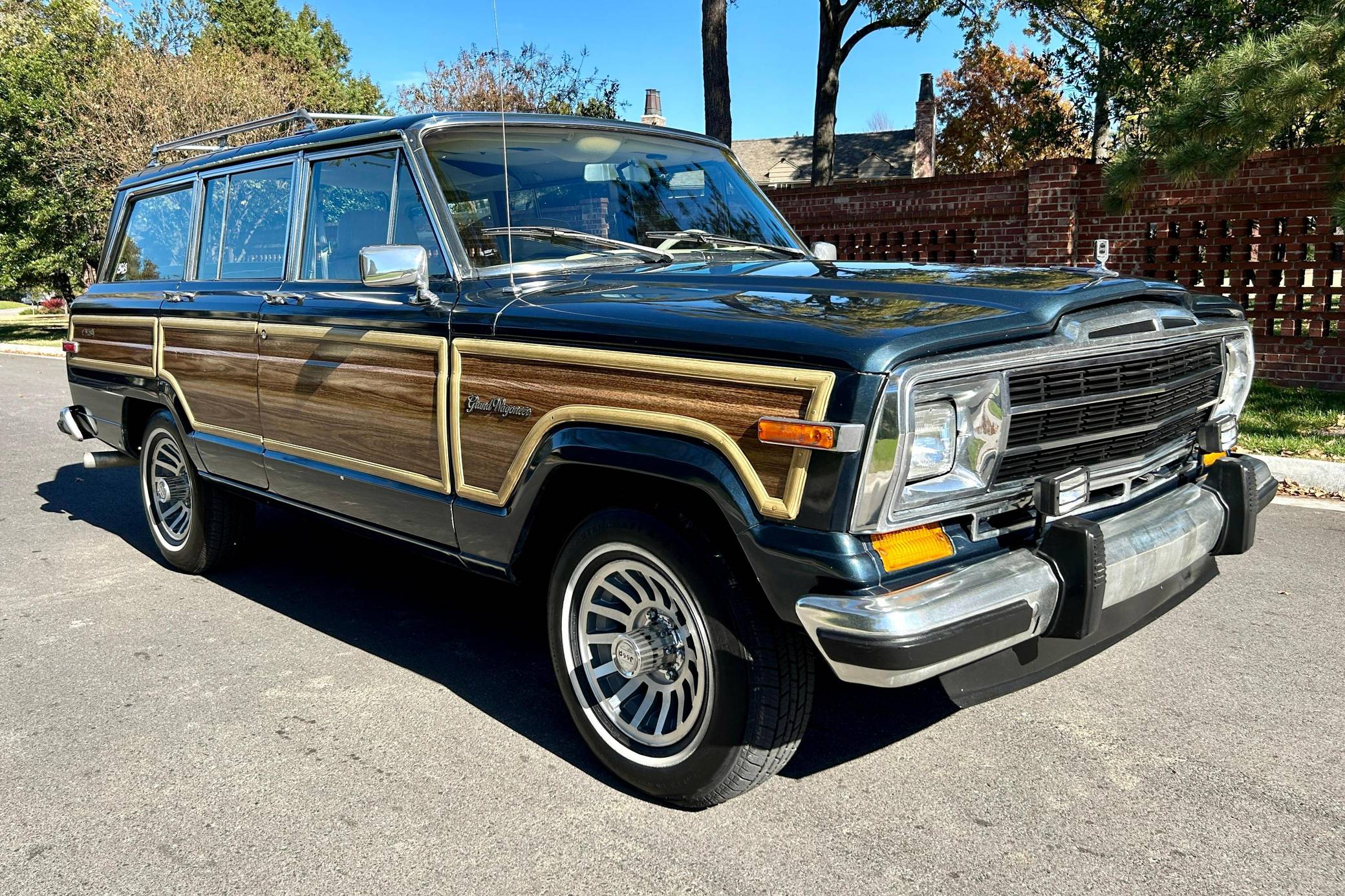
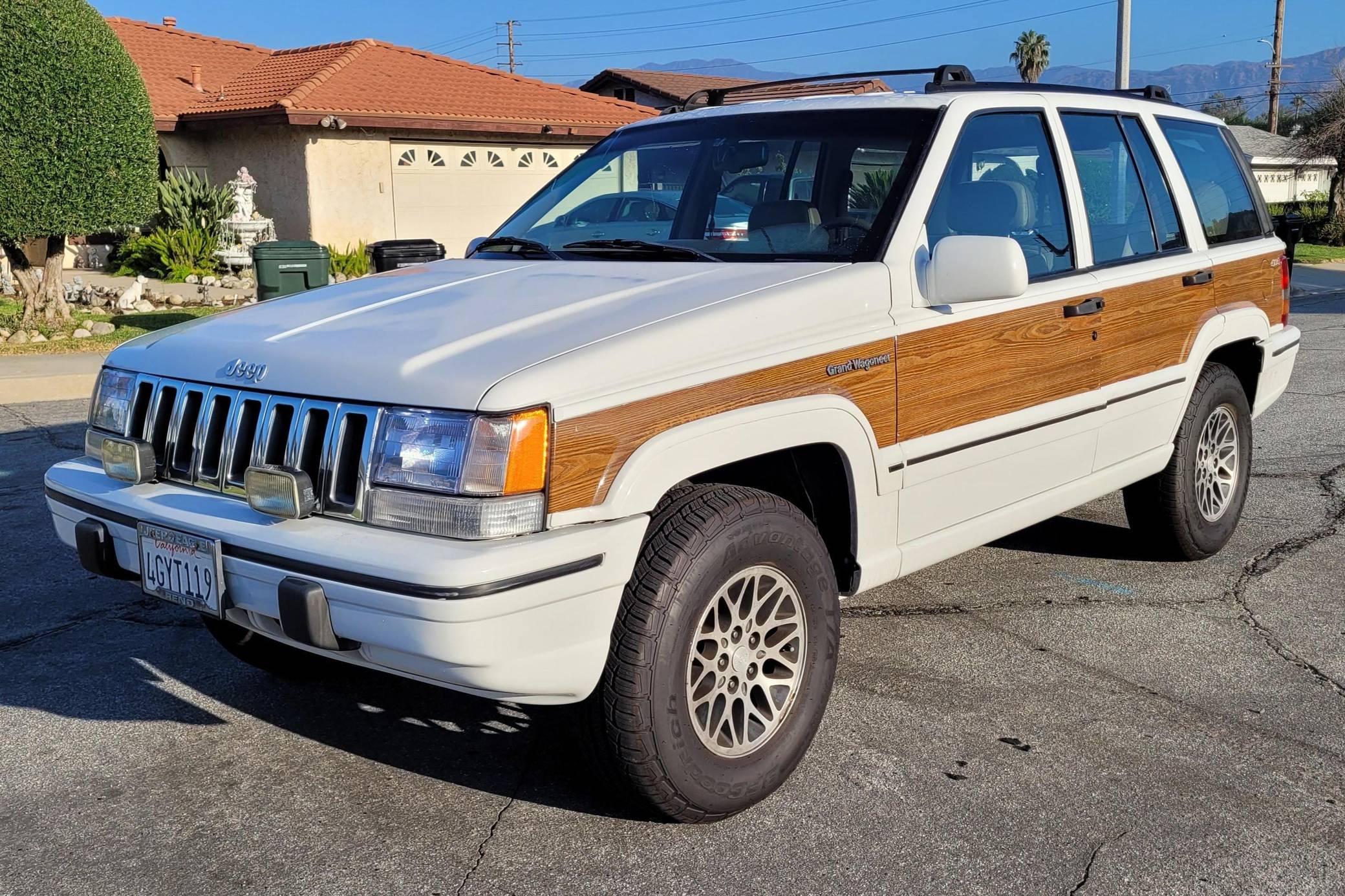
Though the four-speed automatic versus the three-speed in its predecessor wasn’t a huge leap (especially given the four-speed’s reliability issues), the significantly more powerful and reliable engine, along with the >500 pound lighter unibody structure, along with the significantly improved suspension made jumping from an SJ into a ZJ like stepping into the future.
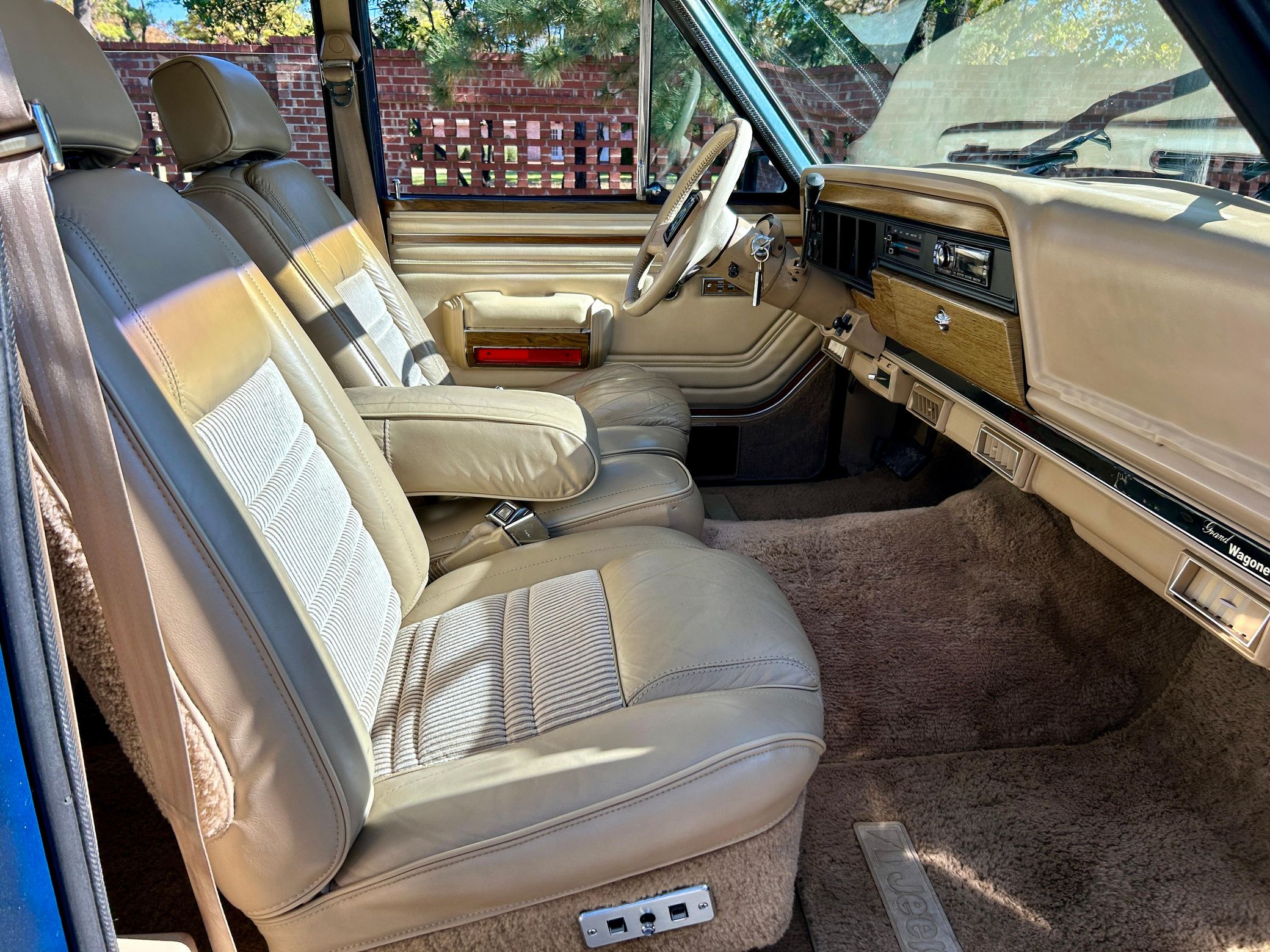
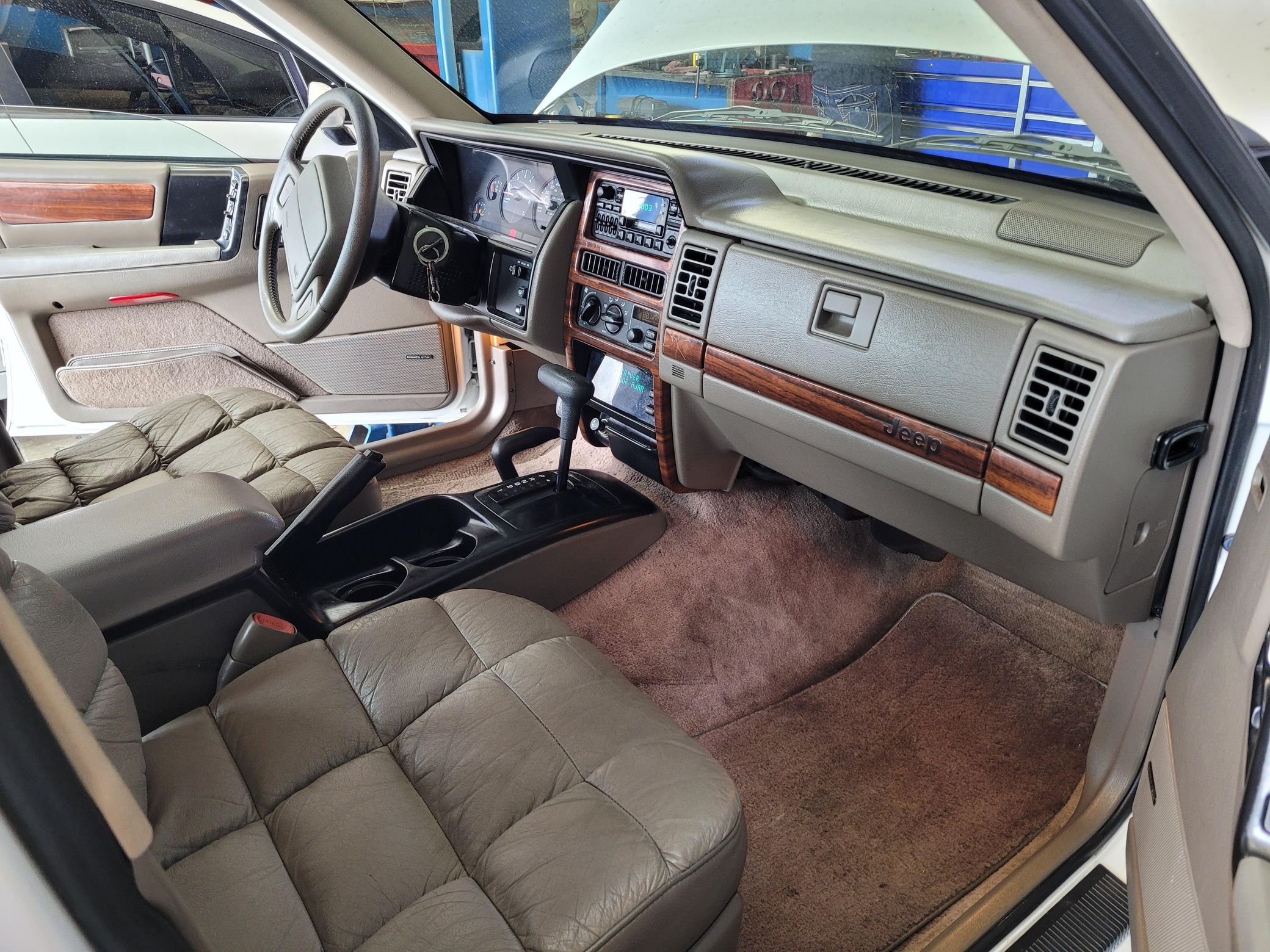
Add airbags, ABS brakes, and just a totally more modern cabin, and the two couldn’t be more different. I can tell you, after owning two Grand Wagoneer and a handful of ZJs: The ZJ is better in every conceivable way except styling.
Top graphic images: Bring A Trailer; Jeep/Ebay seller
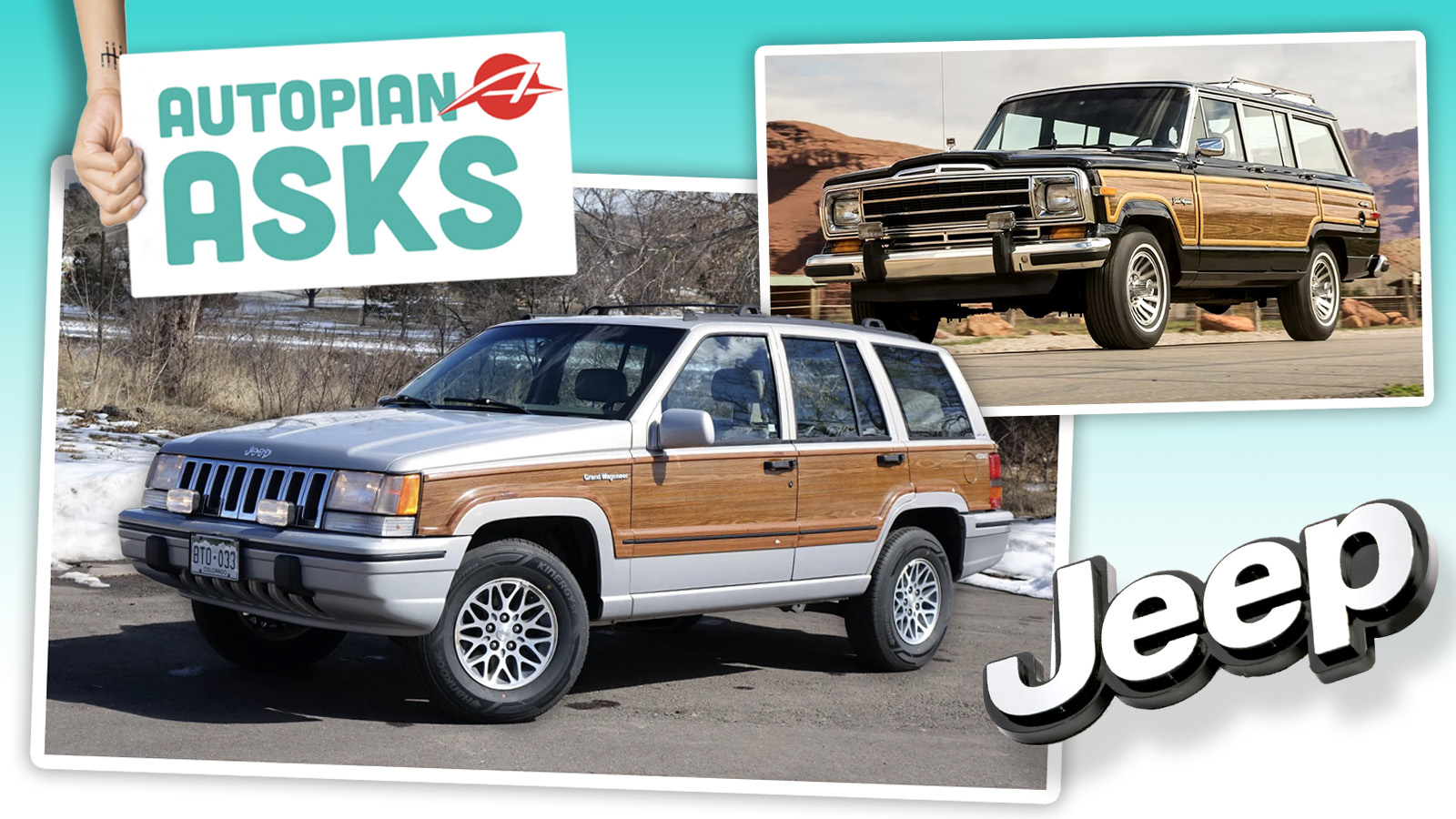



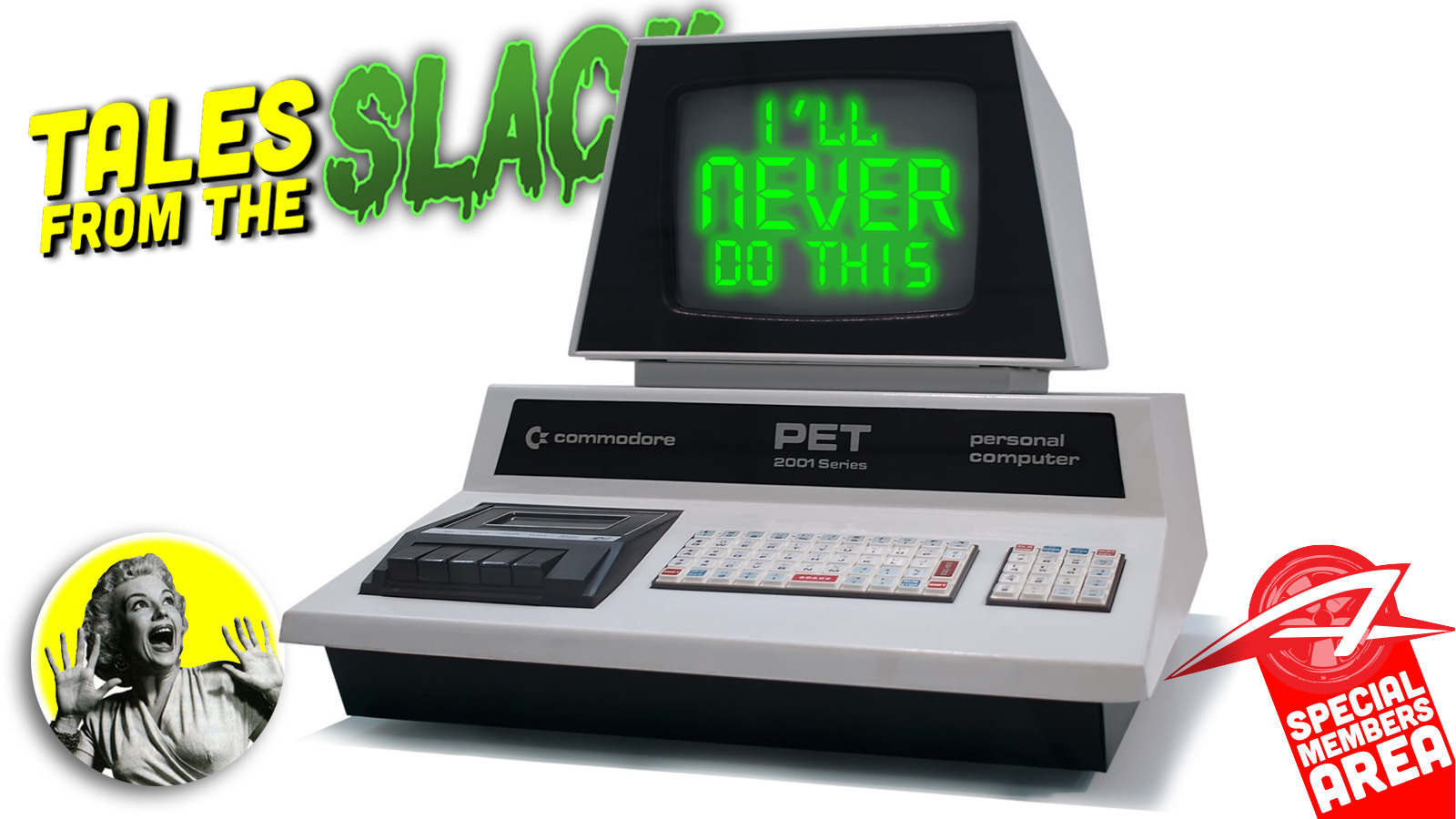
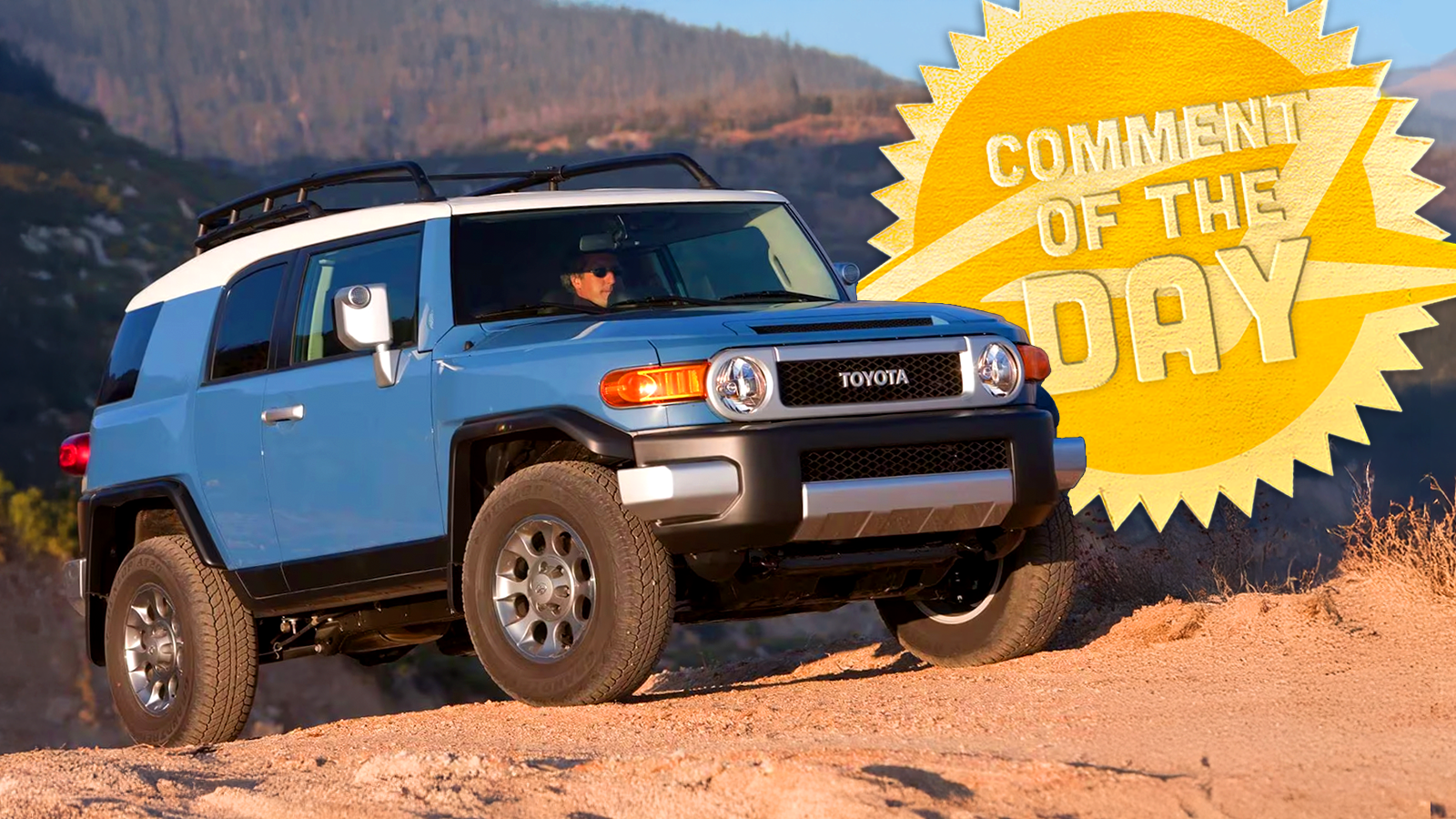
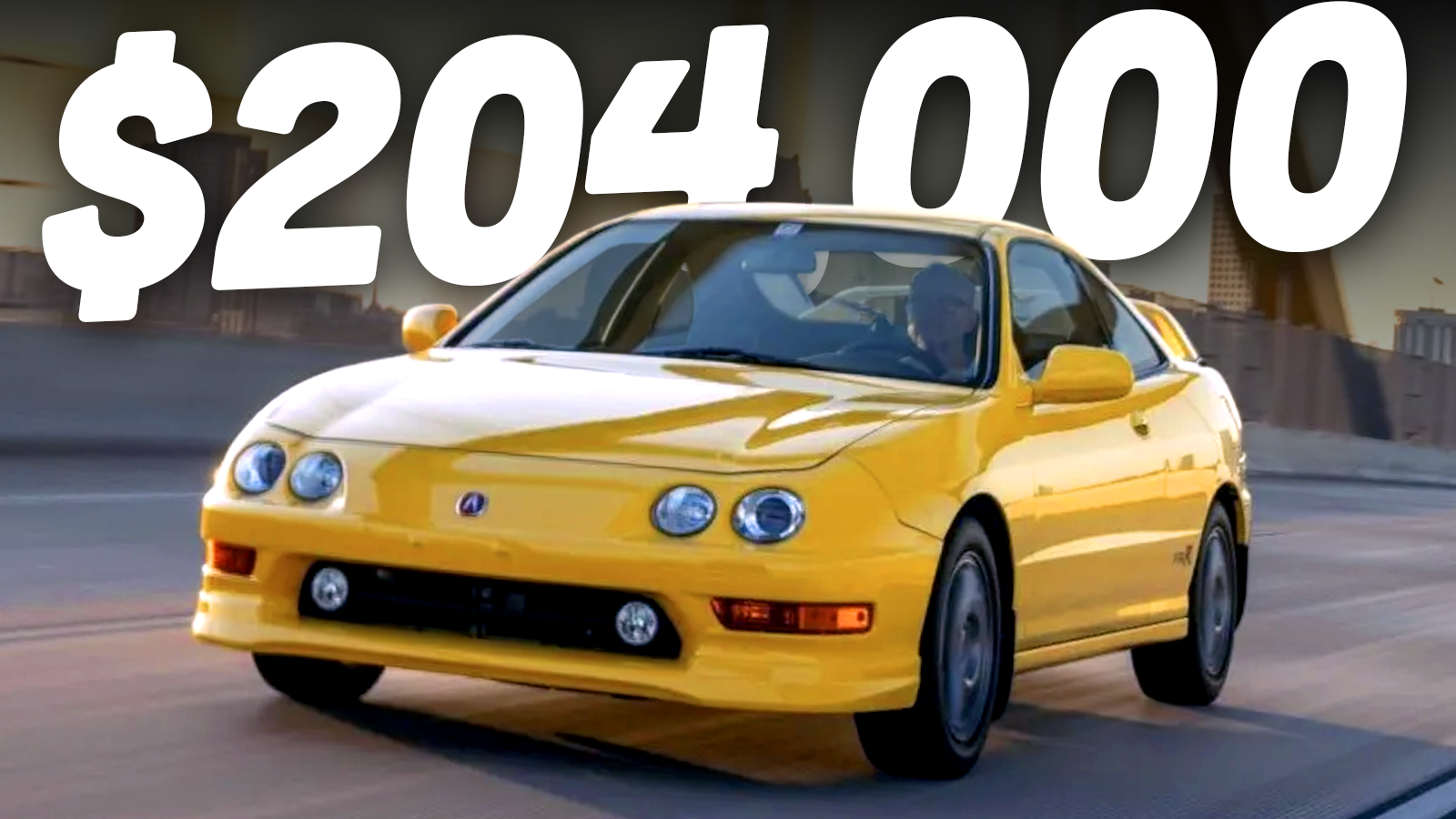
Assuming “called the same thing” isn’t a requirement, it’s probably either the Golf replacing the Beetle or the Taurus replacing the LTD. And while the older ones have their charms and still look phenomenal, the massive jump forward that the DB9 and XL are over what were both essentially a reskinned XJS from the mid 1970s with the DB7 and XK8 is also incalculable.
Honorable mention would be the C5 -> C4, which isn’t nearly the jump the C4 was over the C3; but between the C5 and the 996/986 they basically completely killed the also-rans, the goofy boutique sports car (Qvale, Panoz, TVR) and the outdated overpriced stuff that was still on the market in 1997.
C3 to C4 Vette.. although weak sauce engine for the 1st year the old reviews at the time hailed the wild advancements between the 2 models.
Runner up for me is as others have stated, the cloud cars replacing the Ks
GenX kid here. Yes, the C4 was a tremendous leap forward in technological and mechanical design, but I have never liked its styling. I feel the same way 40 years later: if you are going to replace what is unquestionably the sexiest body style ever produced by an American automaker, you’ve got to do better than this. In my decidedly not humble opinion, they finally got it right again with the C5.
But don’t take that to mean that I would kick a C4 ZR1 out of bed for eating crackers. I’m sure that taking about three or four hard corners or ripping off three or four quarter-miles or 0-100-0 runs would be enough to make me forget what it looks like.
Mercedes-Benz – the transition from R107 to R129 was like skipping an entire generation of SLs, including all new engines, etc.
The R107 was in production for so long, it was kind of inevitable.
Seems like by far the best known (and perhaps most trite, ha) example would be the Citroën DS succeeding the Traction Avant in 1955 though the DS still used basically the same engine as the Traction Avant. In virtually every other area, however, the difference was day and night (if day was next week and night was last week) like with the aerodynamic design & aesthetics, the hydropneumatic suspension system, the disc brake system, etc, etc. Indeed, the DS was utterly unlike pretty much everything else on the road. After all, it’s wild as heck to see a DS and, say, a 1955 Chevy Bel Air side by side…
Came here to say the exact same thing. The DS was the successor in every way to the Traction Avant, which was every bit as ahead of its time when it came out in 1934(!) as the DS in 1955.
Yeah, and the Traction Avant was still pretty dang advanced for its time even as it was replaced by the DS, like with its FWD, its monocoque construction, and its roadhandling (heck, it was still popular into the late 50s and even later with gangsters & bank robbers for use as getaway cars.)
The Traction’s biggest problem in the early ’50s was Citroen wasn’t willing or able to restyle it. It looked like a 1934 car even to the very end in 1956 or 57.
Yeah, given to understand that Citroën had been working on the DS for some 18 (!!) years prior to its ’55 launch so it makes sense that they weren’t all that interested in restyling the Traction Avant (kind of along the lines of “if it ain’t broke don’t fix it.) It was still doing reasonably well on the market despite becoming rather dated in appearance; after all, it was still fairly advanced technologically speaking.
Plus, their pecuniary situation wasn’t exactly robust, so, yeah, it was a combination of not willing to restyle and not having the wherewithal to do so.
The S197 Mustang and Zeta Camaro shifted those cars from rickety to some of the most sophisticated GTs in the world (if one can avoid being too snobby about the interior).
i don’t think it can ever be understated how much these two cars democratized performance cars. the amount of performance you got for your dollar with these generations of mustang/camaro can not be overstated!
C7 to the C8 corvette. 66 years of front-engined Corvettes before swapping heads and tails (much to the dismay of the purists).
Dodge Challenger from first gen to second gen
Camaro/Firebird from first to second gen
If it counts, Tercel to Echo
Lexus ES250 to ES300 in 1992
Mk3 to Mk4 Supra
Z31 to Z32 300ZX
Porsche 924/944/968 to Boxster
I skipped the Echo generation and went from a ’95 Tercel to a new ’08 Yaris. Interior materials quality and rear-seat-in-use trunk space were worse (what is it with Toyota not being able to do a roomy hatchback “trunk” area?) everything else was much improved and the higher H point was welcomed, I’d been driving cars that were 52″-55″ high since I started driving in 1990 and the Tercel was the first and only one I ever hit my forehead on the door frame getting into.
Camaro/Firebird from first to second Gen? Absolutely, and not just because of my profile pic. I would argue that the design of those two cars from 1969 to 1970 are at least as much of a huge leap into the future as the Ford Taurus was in the ’80s.
There have always been lots of “long hood, short deck” coupes around, but the second-gen F body looked like absolutely nothing else on the road when it came out, with a walk to back its talk. At the time, Car And Driver called the 1970 Trans Am “a hard muscled, lightning-reflexed commando of a car, the like of which doesn’t exist anywhere in the world, even for twice the price. Bristling with spoilers and scoops and vents, it looks like a racing car and it moves exactly the way it looks.”
I can’t believe no one has said C8 Vette. Other than the Beetle, what other car moved the engine to another zip code?
porches tried to with the 928 but the demand was not there i think at one point Porsche thought there were going to move on from the 911 but consumer demand dictated Porsche keep the 911 forever.
The Fiat 500 did that – went from front engine/RWD to rear engine/RWD to front engine/FWD, its kind of been everything
That’s right, I forgot about that one.
There was nothing “Sports” about the M151.
Porsche 996 in 1997. First all-new platform and first significantly new engine since 1963.
The 1997 VW “New” Beetle was quite a leap from the last one.
Yup, I’ll give it a #2 after the C8. Many cars changed drive wheels or the body, but moving the engine fundamentally changes the character of the car. In the Beetles case, it was to align it with the FWD Golf.
Think about the fact that they were both being built at the same time for some years.
Almost every Chrysler product in the early to mid ‘90s would qualify: Ram, Intrepid/Concorde/LHS/Vision, Stratus/Cirrus/Breeze, and Neon, all were revolutions compared to what came before.
I’d also nominate the Taurus/Sable and Contour Mystique from FoMoCo, Hyundai Accent, and Honda Civic CVCC.
A lot of 90s Chrysler products will fit the bill here. Any replacement for a K-derived platform really. Dynasty & C/Y bodies -> LH cars get my vote. A lot of 2010s H/K products too.
2nd -> 3rd gen Nissan Altima. Yeah, helped by cost cutting, but it went from an also-ran in family cars to a serious entry in its class.
2nd gen Honda Odyssey – not that the 1st gen was a bad vehicle, but it went from an oddball choice to a true challenger in the segment, that Chrysler couldn’t leapfrog so easily like they had with the Windstar.
Random question, are the ZJ and WJ Grand Cherokees the only factory vehicles ever that had unibody, solid/live axles front and rear, and coil springs all around? Any others, or is it unique in those aspects?
As far as the question, I’d say the Tesla Model S if it qualifies for the question. Not sure what the “predecessor” comparison would be, but anything from an old Detroit Electric, EV1, Leaf, or even a Tesla Roadster could potentially be argued.
European here.
Assuming you’ll allow a name change when one model replaces another (because it was a direct replacement), I’d like to propose the outstanding Ford Focus that replaced the very mediocre Escort.
Overnight, Ford went from bottom of the pack to the top.
Non-Europeans might not get what all the fuss is about, but it was a massive shift from making average cars and then marketing the hell out of them, to making cars that were at or near the top of their class.
Very true on this side of the Atlantic as well.
The Escort could be cool at the right level (GTs, etc.) but the Focus was good across the board. I know people who still lament not only the loss of the Focus, but especially of its station wagon verison.
The ’90s US Escort was the first car I’ve encountered that was better in US-market form (widely praised by the press when new, held up well as a used car, a Mazda Protege with a hatchback and better rustproofing, what’s not to like?) than the Euro version (reskin of the decade-old underpinnings, panned by the press there except for the rare, expensive, balls-to-the-wall Cosworth).
Yeah, that’s an interesting outcome of the Mazda-Ford partnership, though the U.S. Escort didn’t seem quite so good when equipped with Ford’s agricultural CVH four through the whole model run. Sure, there were sporty options with the Mazda DOHC but they were limited to specific models–Laser, GT, ZX2.
Bear in mind that the Escort Cosworth’s chassis was unrelated to the rest of the Escort range. It was essentially an Escort upper body mated to a cut-down Sierra Cosworth platform, complete with longitudinally mounted engine.
This is a good one. Climbing out of my friend’s Escort and climbing into my three year newer Focus made it hard to believe they were made by the same manufacturer only a few years apart.
S197 to S550 Mustang for one big thing at the very least: bye bye 50 years of live rear axles. This was epic in Mustang land.
Moving from the Fox was huge, losing the live axle is a debatable change.
That gets my vote, too. Mustang II to Foxstang was huge, even if the early Foxstang was still a bit of a pile, it wasn’t the steaming pile that was the Mustang II.
Does Jaguar XK150 to XKE count?
I guess it depends – it’s a big jump between those two but if you stick the C-type, D-type and XKSS in the middle there’s a bit more of a gradual development.
Other than the BOF to unibody, the Grand Cherokee’s leap wasn’t very dramatic. The fact that the engines were different, but shared a size and configuration, kinda says it all. Even their interiors need a double-take to ensure you know which is new and which is old.
The correct answer, limited to the same nameplate, is the Dodge Charger. Twice. The fourth gen, which ended in ’78, and used a platform from the early 60s and the ancient 318-V8, the one DT thought modern in the Jeep. The next generation was a front-wheel-drive compact hatchback developed in Europe and used Volkswagen and Peugeot engines. The sixth generation was a rear-wheel-drive, full-size, 4-door sedan based on the Mercedes E-Class.
I don’t think there is another nameplate that saw so many dramatic changes over three generations. Each an improvement over the last.
Lx cars are not e classes. It used *some* w211 and w220 suspension design. The lx platform was developed from the LH which, from the beginning, had rwd and awd configurations in mind.
True, they aren’t exactly the same as the E-class, but they share a huge number of elements and a common development. It doesn’t really detract from my point that the 6th generation was a massive leap from the 5th generation.
It doesn’t say it all… at all. The engine was literally completely different, the entire suspension system was extremely different, the body is totally different, even the method of engineering development (Computer Aided Design on the ZJ) was completely different.
The jump between the ’91 Grand Wagoneer and the ’93 was absolutely monumental.
Different isn’t synonymous with advanced. The Chrysler LA had been around for about 30 years when it went into the ZJ. The suspension was still solid front and rear axles, and you even said the transmission and looks weren’t an upgrade. Even the unibody, while new to the Grand Cherokee, had been used on the XJ for nearly a decade at that point. Nothing there is anything I would say is a massive leap.
Regardless of a person’s opinion on the degree of change of the Grand Cherokee, without any other context. It objectively isn’t nearly the leap forward that the Charger had twice in a row—three times actually, since there is a new EV version.
This is an interesting example, but loses me at leap *forward*. While you are right that the Charger has experienced some of the wildest swings in platform design for a single nameplate–you didn’t even mention the EV–the 5th gen Charger was a hack job Omni, through and through. The Charger nameplate revival that began as a package on the Omni 024 hatch broke zero new ground from what the Omnirizon twins had done two years before. The Euro engines were no great leap forward, either, being whatever dreck Chrysler could desperately acquire while readying the K engine.
The 6th gen? A huge leap forward should be no remarkable achievement for a gap of almost 20 years. Not sure that’s what DT is looking for here.
The only time they really swung for the fences with a Charger redesign was with the new EV. And boy did they misread the market.
Based on the Jeep example, the consideration is the gap (leap), in a direction that advances the model (forward). Since the Jeep example had decades between releases, the timing isn’t the issue. The ZJ didn’t offer much that was unique or uncommon at the time. It was only advanced compared to the SJ.
The fact that the 5th generation was based on the Omni/Horizon doesn’t discount the fact that a modern FWD platform was a massive leap from the ancient RWD model on a platform that was decades old and a powertrain even older. Especially given where the market had moved. The 5th generation was more advanced in every single way compared to the 4th generation. Structure, drivetrain, form factor,
The 6th gen pulled the same trick by completely reinventing itself for the current market with a platform and drivetrain that was all basically newly developed for that platform. It also provided all the technical elements, such as anti-lock brakes and airbags, that the previous gen lacked.
I mentioned the EV in my response to DT, and it is for sure another similar leap. It’s a Stellantis product, which means it’s likely to be subpar, but that has been true of each generation of Charger mentioned. Other than the 6th gen, none of these have been very successful, but that wasn’t a requirement to show a leap forward.
This AA is about the leap from one generation to the next, and SJ to ZJ was absolutely gargantuan.
As for whether the ZJ was advanced for its time: Actually, it was! It was the first Jeep designed with CAD, and the advances in refinement were enormous. It was also the first SUV with an airbag.
It was the first vehicle EVER to feature a five link coil spring suspension front and rear. This suspension, particularly in the rear (which the XJ did not have), has since been copied by EVERYONE. G-wagon, 4Runner, Tacoma, Land Cruiser, Ram, etc. In fact, the modern Jeep Wrangler JL’s suspension design first debuted on the ZJ for the 1993 model year.
“The Grand Cherokee leaps to the head of its class” wrote Motor Trend, who gave the vehicle 1993 Truck Of The Year Honors, saying the Jeep handles “like a sporty car.”
Huge leaps in refinement, engineered via a then-state-of-the-art method, a rear suspension that pretty much every other company copied, an overall suspension design still in use today on the JL, advanced safety features for an suv, and a Motor Trend win that says it was at the head of its class – yeah, the ZJ was not only a giant leaps over its SJ semi-predecessor, it was also advanced for its time.
And that 318 was really totally not old at all, with only some basic geometry and a couple parts in common with the old one. It was a highly competitive engine for 1992, when others were still using tbi and most didn’t offer a V8 at all.
Chrysler literally built a new state-of-the-art plant for the ZJ.
It was a big deal, and it was advanced, but above all – my question was about the leap over its predecessor, and the ZJ makes the SJ look like a Conestoga Wagon.
The factory in which it is built, its advanced design, or the tools used to design it, aren’t a quality of the car in my book. Both the Chrysler LA and AMC V8 had undergone refinements over their lifetimes, but they shared very similar styles, tech, and ages. Nothing that could be considered a massive leap forward, even if one was a bit better than the other. The new airbag and other convenience items (like power seat memory) are changes common on any new platform/model.
Fair enough on the five-link suspension, which was a substantial technical advancement and, in fact, made the ZJ comfortable enough for a huge number of consumers to consider it a daily driver. But that is a single element and, for me, doesn’t constitute the entire model being a massive leap forward.
Additionally, since the Grand Wagoneer is merely a trim level of the Grand Cherokee, and the XJ also featured a Wagoneer trim, selecting the SJ as the singular predecessor seems somewhat lacking. Especially since the “Grand Wagoneer” name was only added to the SJ in 1984, more than 20 years after SJ production started.
I think your original instinct on the XJ was far better. The XJ had a clear predecessor with which it shared almost nothing, with the newer model being better in every way.
You asked the question “Which All-New Car Was The Biggest Leap Forward Over Its Predecessor?” and supplied one option, which, to me, isn’t even the all-new Jeep that was the most significant leap forward over its predecessor. It isn’t even in the same ballpark as the Chargers I mentioned. The question wasn’t which model had changes that interest us personally.
At that time large jumps were happening on a lot of body on frame platforms. ie square body to OBS Chevy and 1993-1994 Dodge Ram. Massive leap forwards on antiquated designs. That said, you’ll have a hard time arguing against the Model T to Model A or the Beetle.
Either the C4-C5 Corvette or the 93-94 Ram
I was gonna say C3->C4 and the Ram as well.
The 90s Ram completely rewrote the book for the entire full size pickup truck segment, an answer I’m surprised I’m not seeing in more comments. It was a tectonic shift. Many people said to themselves what I did: “Why doesn’t everyone’s pickup truck look like this?” Within another decade, they did – both Ford and Chevrolet adopted some form of the Ram’s “big rig” front clip design.
Another several years later, and now most of them look like… well… whatever you call this “pissed-off brick wall” styling up front. But 2025 Rams still look terrific.
Ford Model T to Model A. Double the power! 50% higher top speed! Windows!
I was thinking 1948 to 1949 Fords.
Hydraulic brakes!
The Model A has mechanical brakes. Ford didn’t switch to hydraulics until 1939.
Oh, I thought it was the A, at Edsel’s urging.
No, Henry Ford stubbornly clung to cable operated brakes under the notion that they were somehow safer (safety of steel, from pedal to wheel)
Pedals that did what we (today) assume they do.
I think the jump from LTD and Fairmont to (North American) Taurus would be my nominee.
Runners up would include the Dodge Aspen -> Dodge Aries, Mustang II -> to (fox-bodied Mustang), or Dodge B-350 -> Dodge Sprinter
None of the successors would qualify as good cars, but they sure were a leap to something far better.
For those who weren’t around at the time, I’m sure it’s tough to believe, but the Taurus really was that completely game-changing.
And not just for Ford…the automotive design standard of the 90s largely had the Taurus to thank.
The Taurus would absolutely qualify as a good car as well.
They were, despite my family’s particular 1986 LX wagon offering plenty of evidence otherwise.
Not all of it was related to my newly-minted license & commensurate shenanigans, no sir.
We had an ’87 LX wagon, and in spite of a hard life, including the use by another newly-licensed teenager who will remain nameless, it made it to 365k miles before being retired.
Agreed! Taurus caused Chevy to cut short the Celebrity and it’s 70s boxy styling to launch the Lumina and Pontiac to end the 6000 for the Grand Prix(the Olds Cutlass Ciera and Buick Century continued another 5 years). And Dodge restyled the k-cars, look at the 1991 Daytona vs the 1992, and the cars like the Spirit, Acclaim, and new Lebaron vs the k-cars. The Taurus basically launched the 90s back in 1986.
That transition isn’t quite correct, but I agree with your sentiment.
Fairmont was replaced by Tempo.
LTD was replaced by Taurus.
Trying to think of a specific ‘best’ example, but I’m leaning towards when a model like the Toyota Corolla shifted from RWD to FWD.
Being from a family that had both 4th and 5th Gen Corollas: Nope.
One of the reasons everyone fondly recalls the AE85 is because the FWD models it was sold alongside were so very beige. That generation embraced “economy shitbox” entirely.
I’d offer up the XV10 Camry as the biggest shift for the better in Toyota models. The Lexus influence did it good and sales followed suit
Absolutely not a Dodge fan but when the new Ram came out in the 90’s it changed everything.
But wasn’t it superficial? Same underpants, same LA motor but they badged it “Hemi”. It worked out great, but it was only really different-looking.
Uh, no, Hemi didn’t come back until a new V8 in the 2000s.
Regardless, the 94+ Ram took Dodge from barely in the full size truck business (and most of the juice left was the new Cummins) to selling 100s of thousands a year.
I was about to post the same thing going from the D/W series trucks to the 94 trucks was a huge jump. Hell my 92 d250 was the same platform that started all the way back in 72 so they ran with the generation of trucks for a long time.
That wasn’t unusual for pickup trucks back then, though – the GM “square body” ran from 1973-87, and the contemporary Ford F series trucks had a similar run during the same timeframe. Dodge was simply a few years late to the party, but they crashed the hell out of it once they showed up, with an all new design that absolutely destroyed the offerings from Ford and GM.
If we are going off of name-brand alone: The Datsun Fairlady to the Fairlady Z.
Essentially british sports car becomes a 2-seater coupe with a torquey inline six, all independent suspension and a nice price point with an amazing design.Which defined the product from 1969 until now.
The current generation Prius.
Power goes from meh to reasonable
Looks go from awkward/signaling to downright good looking.
A penalty box for those looking to save gas and clog left lanes becomes an attractive and pleasant daily driver. I just had one as a rental, and even in rental spec it was good.
I came here to post about the new Prius, too, on looks alone.
This is also my answer to which car I wish would depreciate a little faster.
It seems like Toyota finally got the memo I put out 25 years ago: “You know what two factors keep people from embracing alternative fuel/hybrid/electric vehicles? One, they are all slower than a tax refund; and two, it seems that everyone who builds one makes them all deliberately stupid-looking. Want to sell non-ICE cars to Americans? Make them haul ass, and make them actually look good.” Tesla nailed this right out of the blocks, and apparently gave other automakers permission to consider these two factors.
Of course, letting the rest of the industry screw up the next big new thing, taking notes, and then coming out with a better one than anyone else made? That’s been Toyota’s MO for decades. With the current Prius, they finally understood that you don’t have to make an alternative fuel vehicle look ridiculous on purpose. You could just, like, make a normal car with attractive styling that simply has a different drivetrain in it.
Does it have to be the same name? If no, VW Beetle -> Golf. Entirely different universes.
If yes, Plymouth Voyager. Kinda crusty full sized van to kicking off the minivan revolution? Huge.
The fantastic Golf is my choice, too. It filled the position of the Beetle better and far sooner than the New Beetle.